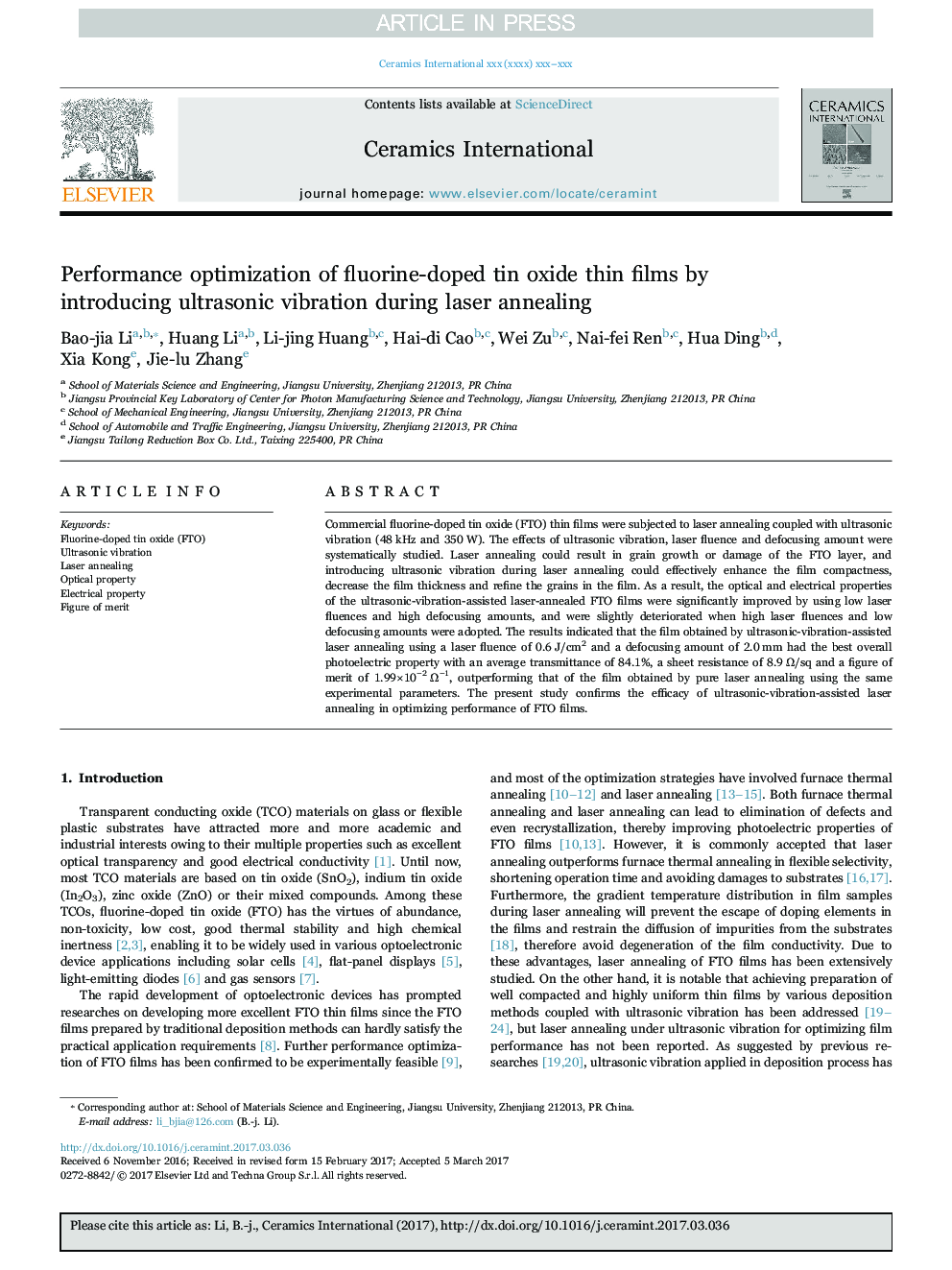| Article ID | Journal | Published Year | Pages | File Type |
|---|---|---|---|---|
| 5437988 | Ceramics International | 2017 | 9 Pages |
Abstract
Commercial fluorine-doped tin oxide (FTO) thin films were subjected to laser annealing coupled with ultrasonic vibration (48 kHz and 350 W). The effects of ultrasonic vibration, laser fluence and defocusing amount were systematically studied. Laser annealing could result in grain growth or damage of the FTO layer, and introducing ultrasonic vibration during laser annealing could effectively enhance the film compactness, decrease the film thickness and refine the grains in the film. As a result, the optical and electrical properties of the ultrasonic-vibration-assisted laser-annealed FTO films were significantly improved by using low laser fluences and high defocusing amounts, and were slightly deteriorated when high laser fluences and low defocusing amounts were adopted. The results indicated that the film obtained by ultrasonic-vibration-assisted laser annealing using a laser fluence of 0.6 J/cm2 and a defocusing amount of 2.0 mm had the best overall photoelectric property with an average transmittance of 84.1%, a sheet resistance of 8.9 Ω/sq and a figure of merit of 1.99Ã10-2 Ω-1, outperforming that of the film obtained by pure laser annealing using the same experimental parameters. The present study confirms the efficacy of ultrasonic-vibration-assisted laser annealing in optimizing performance of FTO films.
Keywords
Related Topics
Physical Sciences and Engineering
Materials Science
Ceramics and Composites
Authors
Bao-jia Li, Huang Li, Li-jing Huang, Hai-di Cao, Wei Zu, Nai-fei Ren, Hua Ding, Xia Kong, Jie-lu Zhang,
